Arturia’s V Collection X is the widest and deepest edition yet
As well as adding a spate of new instruments to the suite, Arturia has boldly rebuilt some of its most celebrated emulations. Has the move paid off?
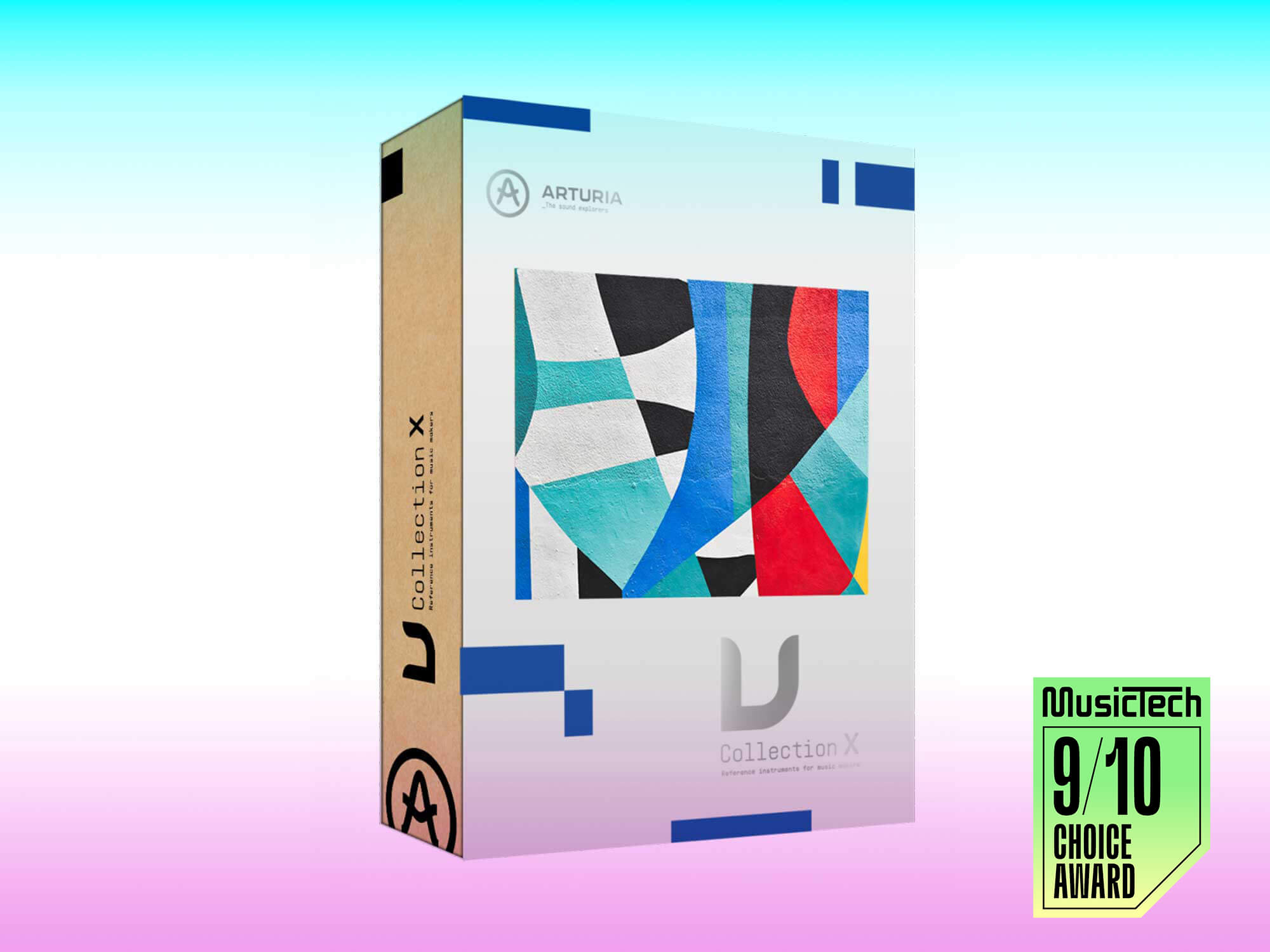
Arturia V Collection X
Review Overview
Our rating
9
Our verdict
⊕ Brilliant new additions to the family
⊕ Excellently rebuilt versions of existing designs
⊕ Extra features expand the applicability of many instruments, often beyond that of their original hardware
⊕ Brilliantly expanded Augmented Instruments range, keeping a consistent workflow
⊕ Easy to manage downloads with Arturia’s Software Centre
⊖ As before, can strain the CPU at times
⊖ Requires a lot of hard drive storage space
When you purchase through links on our site, we may earn an affiliate commission. More information of how this works here.
€599, available at pluginboutique.com
Last time we checked in with Arturia’s V Collection, the French developer’s industry-leading synth suite was in its ninth iteration and introducing new and familiar instruments.
“By the looks of things, [Arturia is] far from finished,” we concluded in that previous V Collection review, and we weren’t wrong. The new X version boasts a total of 39 instruments, with a spate of new additions as well as major updates to familiar favourites.
The synth-sampler hybrid Augmented Instruments series gets three new iterations while two veterans of the collection, the Mini V emulation of the Minimoog Model D and the Wurli V emulation of the Wurlitzer electric piano, get complete overhauls.
One headliner this time round is the Acid V emulation of Roland’s TB-303, which is joined by the CP-70 V, modelled after the Yamaha CP-70 electro-acoustic piano. The MiniFreak V also joins the collection, a software version of the Arturia MiniFreak and the collection’s only emulation of Arturia’s own hardware instruments.
The Augmented Brass, Augmented Grand Piano, MiniFreak V and Acid V were previously available standalone, but here they join the gang and it’s undoubtedly the better for it. To catch up on the details, check out our article on everything new in the V Collection X.
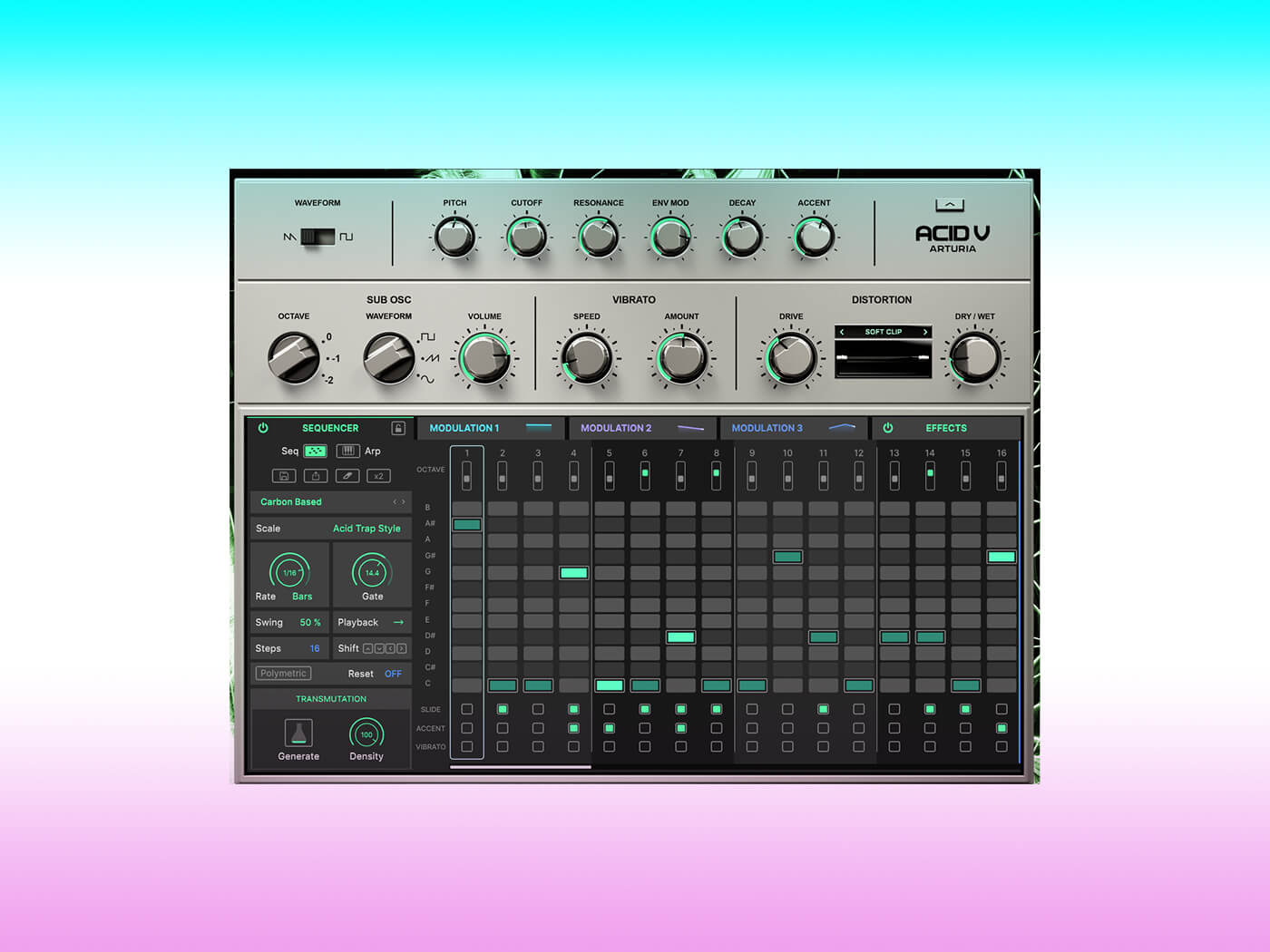
How good is the Mini V4?
Before taking a closer look at some of the newcomers, let’s spare a moment for the rebuilt Mini V4. The Minimoog Model D is one of the most emulated synthesizers in cyberspace; one of the four inclusions of the original suite, we would posit that in many ways, a software instrument developer is only as good as its emulation of the Moog Model D.
For Arturia to redesign its own emulation from the ground up for a fourth iteration is a respectable statement of intent. Far from resting on its laurels, Arturia is clearly willing to revisit and re-examine even its most familiar emulations alongside expanding the Collection’s size. Here, that pays off.
The result sounds fantastic – clearly better than its predecessor – partly thanks to Arturia’s proprietary ‘True Analog Emulation’ technology. That may sound like a pithy marketing gimmick, but it means that, for example, Arturia’s digital oscillators are free-running with notes generated dynamically (as opposed to being samples, wavetables or generated from a zero-point), resulting in a behaviour much more comparable to an instrument’s analogue counterpart.
Mini V4 has a greater note range than the V3, a brilliantly modelled Moog ladder filter and a Vintage knob to dial in some old-school instability; a function favoured by the late, great Dave Smith, it must be said.
Is the Mini V now contending to be the best Minimoog emulation on the market? Previous versions of the Mini V have had mixed reviews, and it might be less technically accurate than Moog’s plugin, developed with UAD, but with this fundamental redesign the Mini V is certain to ascend in the league tables, and its extra features only add to its appeal.
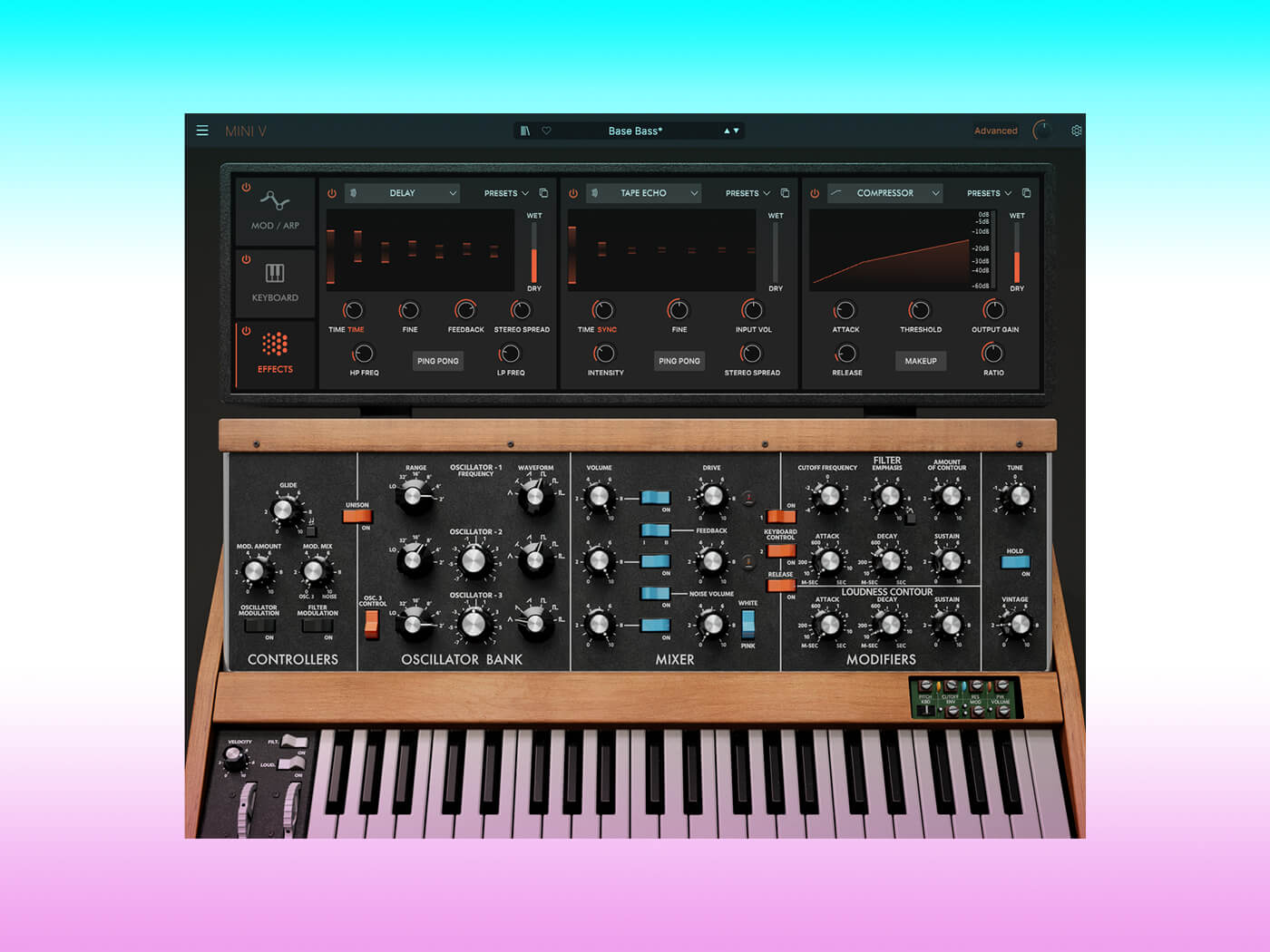
Is Acid V worth it?
MusicTech reviewed the Acid V upon its standalone release, awarding it a 9/10 score and declaring it “a total winner and another triumph for Arturia”.
It stands up brilliantly in the context of a larger suite of instruments: for one thing, considering the original hardware wasn’t much bigger than a paperback book, it’ll almost be rendered life-sized on many computer monitors. That’s a refreshing change next to the likes of the zoomed-out CS-80 V or Modular V – daunting emulations of physically huge instruments whose interfaces are much more resistant to computer-based workflows.
With all the punch, squelch and acidity one could hope for, the Acid V nonetheless goes deep, furnished with an in-depth sequencer, modulation matrix and a dependable Arturia effects bank.
The Acid V will cost you £169 on its own – more expensive than Behringer’s hardware emulation – so it’s certainly worth saving up the extra £400 or so to get it within the bulky suite of other synths on offer in the V Collection X.
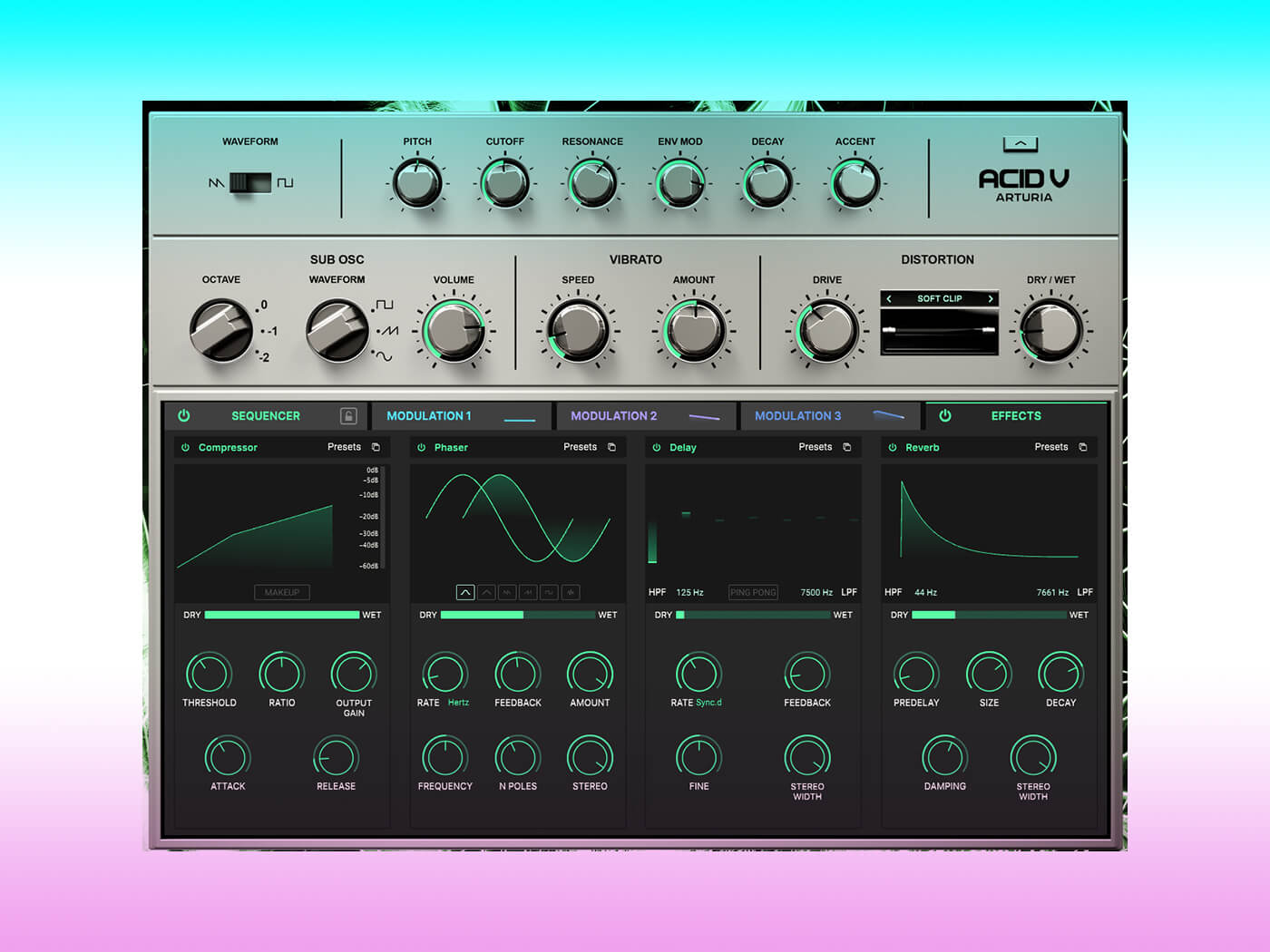
How good is MiniFreak V?
The MiniFreak V is another soft synth that benefits from a simple interface coupled with a tremendous amount of depth under the hood. Released over a year ago now, it once again garnered the approval of MusicTech, with our review dubbing it “an astonishing synth.”
Since the hardware MiniFreak’s synthesis engine is ostensibly digital (with the exception of an analogue filter), what you get here is an exact transposition of the hardware into your DAW. Neat!
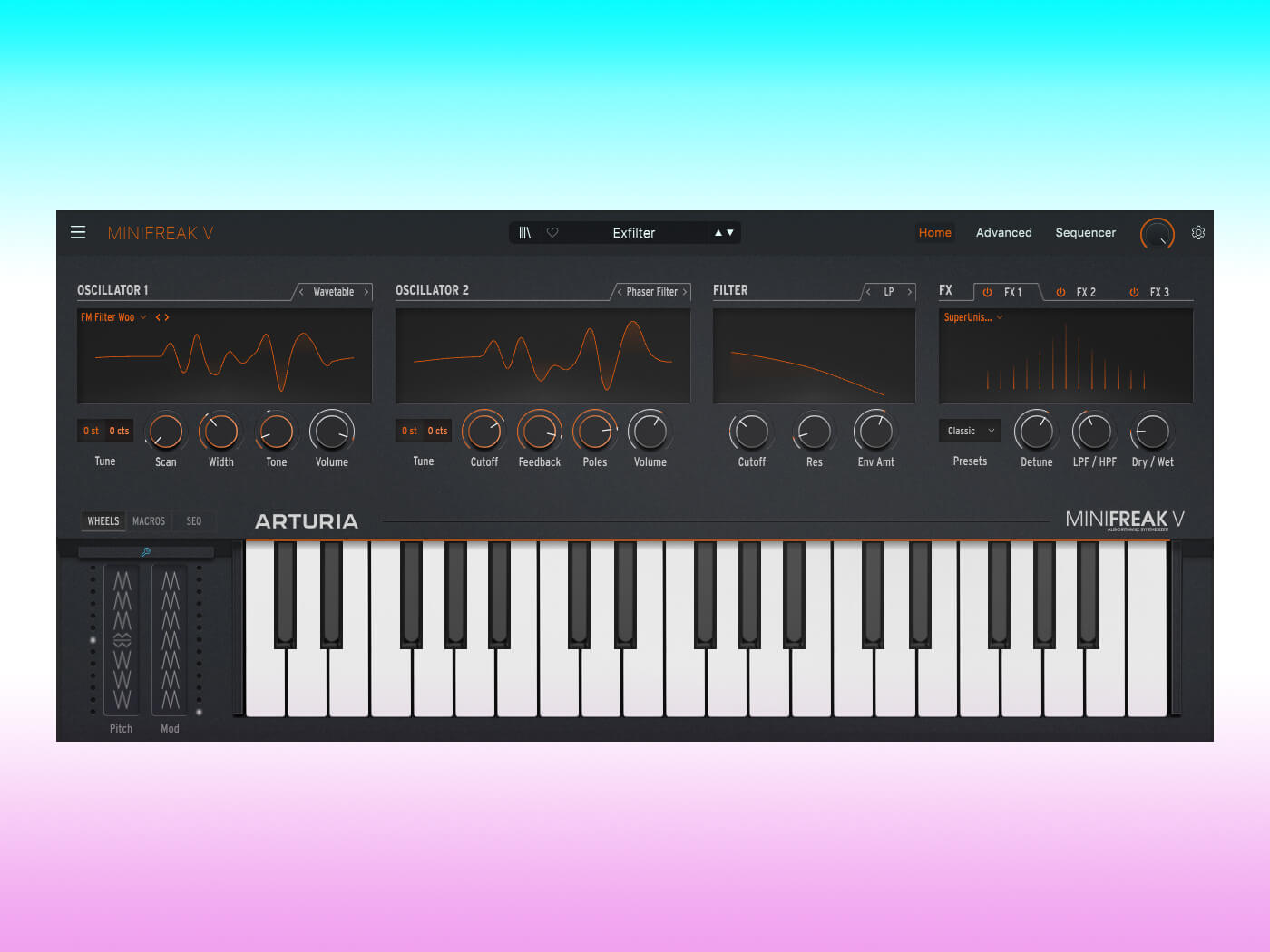
What is the CP-70 V?
The CP-70 V is a curious instrument, modelled after the original’s blend of an acoustic grand piano and electric pickups, favoured by artists from Herbie Hancock to Alicia Keys. It fits into the V Collection perfectly between the likes of the Piano V and the Stage-73 V, in that it’s got buckets of 70s and 80s character that may not be ideal for every application, but will sing when used just right.
It’s also, predictably, highly editable in its response, from its envelope to its tuning. In fact, if you’re of the piano persuasion, the V Collection is by now worth purchasing for its piano explorations alone: with the Piano V, Augmented Grand Piano, CP-70 V, Wurli V3 and Stage-73 V all present and correct, it’s hard to imagine how Arturia could possibly expand this aspect of the suite any further.
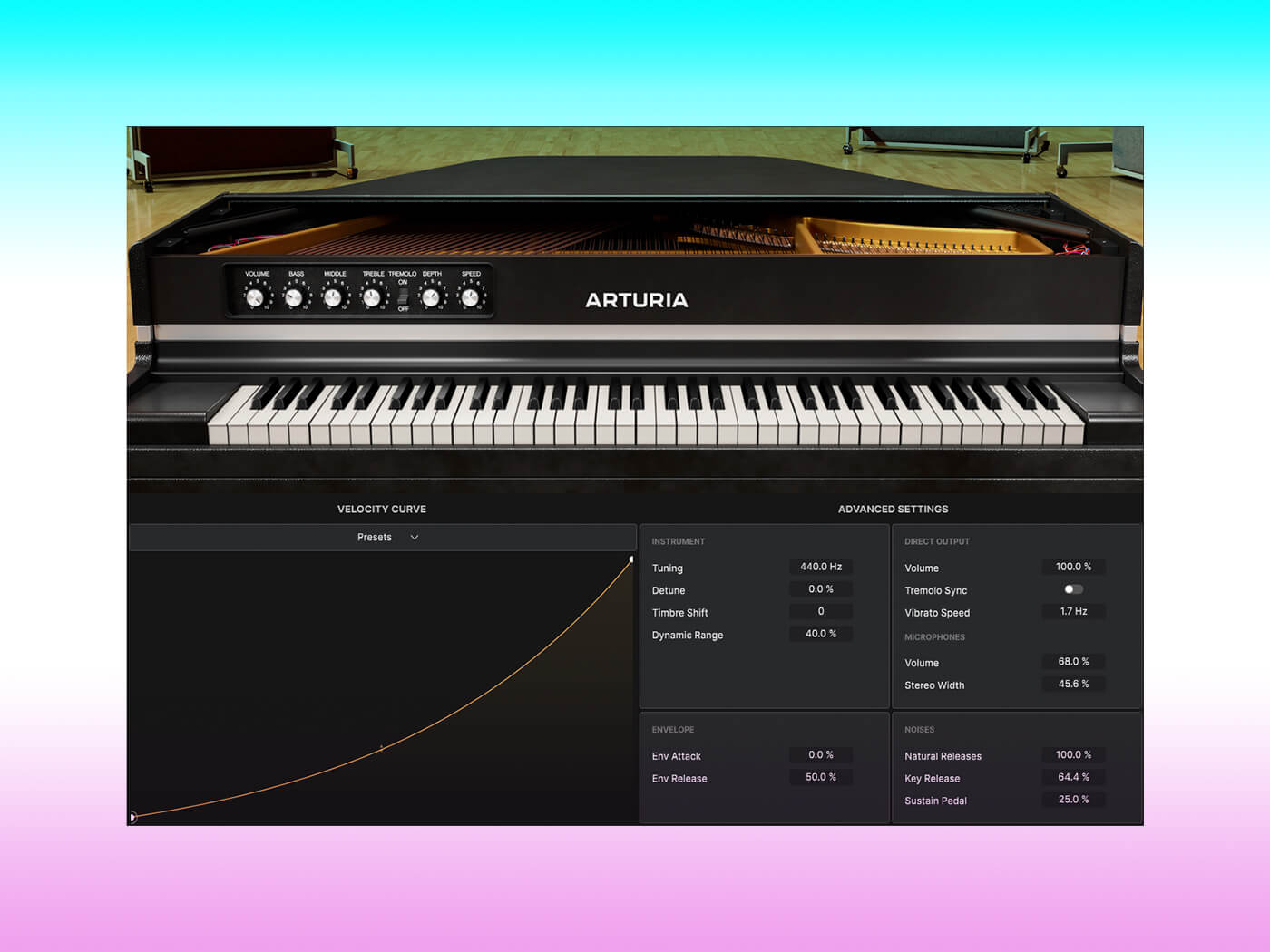
What’s new in the Augmented Series?
With Arturia previously having piloted the Augmented series with Augmented Strings and Augmented Voices, it’s clear that the series is now hitting its stride.
Each follows the same interface and workflow, namely the congregation of pristinely recorded samples and a total of four different synthesis engines (virtual analogue, granular, wavetable, and harmonic) around a large central Morph knob to blend the two. This is then arranged into two layers, making for a potential total of four separate engines working together. Add a host of modulation options and effects and the result is a formidable instrument with enormous range.
We love how Brass bridges the gap between acoustic horns and lush Juno-esque synth sounds with aplomb, while Piano can lend itself to anything from a prepared piano to a DX7-inspired keyboard and Woodwinds expands the palette of clarinets and oboes into new territories entirely.
Should you upgrade from V Collection 9?
The V Collection is now at a point where it’s worth its price if you need even a quarter of its instruments. Users who have benefitted from the sound and workflow of previous Augmented instruments will have a field day with this update’s new additions, while fans of the collection’s familiar favourites also have much to gain. For newcomers to the collection; considering that many of these instruments retail at €199 apiece on their own, at its price, the suite is a veritable steal, so expansive is its range.
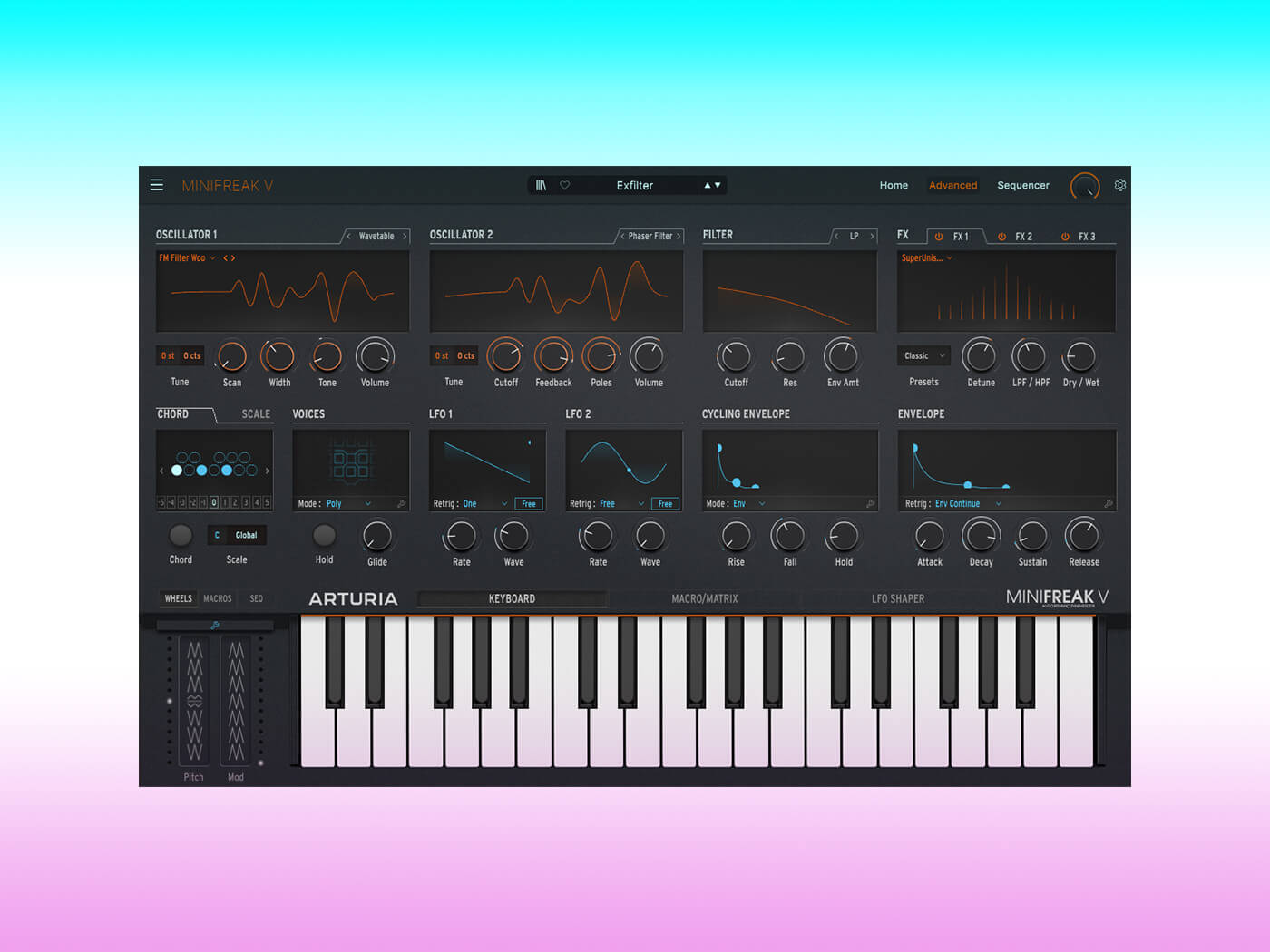
Verdict
Arturia’s V Collection keeps enticing us back. Not just for the expansion of its instrument range but for Arturia’s commitment to constantly improving them.
Choice newcomers are certainly the showpieces of each new edition of the catalogue; but just as valuable is the diligent tweaking and upgrading of well-loved members of the family. A constantly evolving, ever-growing library of creative tools, the V Collection is the gift that keeps on giving.
Key features
- A total of 39 instruments
- 3 expansion packs
- 6 new instruments: MiniFreak V, Acid V, CP-70 V, Augmented Grand Piano, Augmented Brass and Augmented Woodwind
- Two rebuilt instruments: Mini V4 and Wurli V3